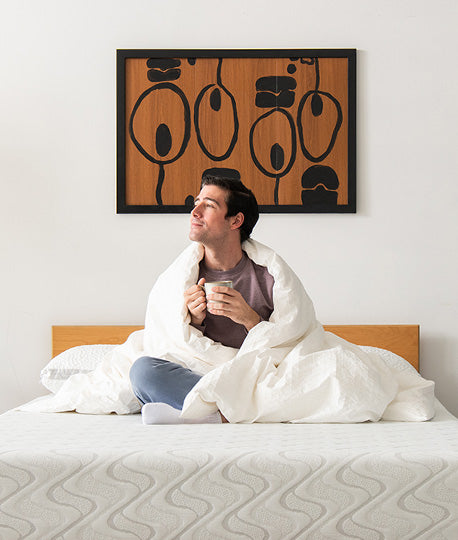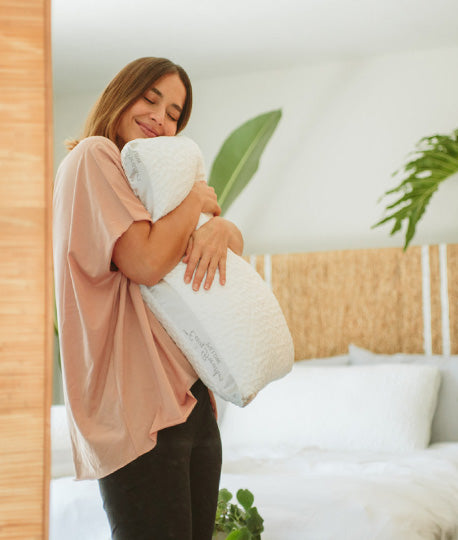How to Reduce Humidity for a Better Night’s Sleep

If you've ever woken up feeling sticky, clammy, or just plain uncomfortable, you know how much of a challenge sleeping in a humid environment can be. High humidity levels can make it difficult to sleep soundly, leading to restless nights and groggy mornings.
But fear not! With a few simple adjustments, you can reduce the humidity in your bedroom and improve your sleep quality. Here are some practical tips to help you create a cooler, more comfortable sleeping environment.
1. Use a Dehumidifier
One of the most effective ways to combat humidity is to use a dehumidifier. These devices work by drawing moisture out of the air, which can significantly reduce humidity levels in your bedroom. When choosing a dehumidifier, consider the size of your room and the unit’s capacity. Make sure to empty the water reservoir regularly or choose a model with a continuous drainage option.
2. Improve Ventilation
Proper ventilation is key to controlling humidity. Open windows and doors to allow fresh air to circulate through your home. Using exhaust fans in bathrooms and kitchens can also help reduce moisture levels. If your home has an HVAC system, make sure it’s well-maintained and the filters are clean to ensure optimal air flow.
3. Use Air Conditioning
Air conditioners can effectively reduce humidity by cooling the air and removing excess moisture. Make sure your AC unit is appropriately sized for your room. Running your air conditioner on a lower setting during the night can help maintain a comfortable sleeping environment without making the room too cold.
4. Control Indoor Plants
While indoor plants can improve air quality and add a touch of nature to your home, they also release moisture into the air. If you have a lot of houseplants, consider moving some of them to other areas of your home or placing them outdoors during particularly humid periods.
5. Take Shorter, Cooler Showers
Hot showers can increase indoor humidity levels. Opt for shorter, cooler showers to reduce the amount of moisture released into the air. Make sure to use the bathroom exhaust fan during and after your shower to help vent the humidity outside.
6. Dry Laundry Outside
Drying clothes indoors can add a significant amount of moisture to the air. Whenever possible, dry your laundry outside. If you must use an indoor dryer, make sure it’s vented to the outside to prevent moisture from accumulating in your home.
7. Seal Windows and Doors
Drafty windows and doors can let in humid air from outside. Check for any gaps or leaks and seal them with weatherstripping or caulk. This will not only help reduce humidity but also improve your home’s energy efficiency.
8. Use Moisture-Absorbing Products
There are several products on the market designed to absorb excess moisture from the air. Desiccants, such as silica gel packs or moisture-absorbing crystals, can be placed in problem areas to help reduce humidity. You can also use natural alternatives like charcoal briquettes or baking soda.
9. Lower Room Temperature
Humid air often feels warmer than it actually is. Lowering the temperature in your bedroom by a few degrees can help you feel more comfortable. Use fans to circulate air and create a cooling breeze. Ceiling fans, in particular, can be very effective at distributing cool air throughout the room.
10. Monitor Humidity Levels
Keep track of the humidity levels in your bedroom with a hygrometer. This simple device will give you an accurate reading of the moisture content in the air. Ideally, you want to keep indoor humidity levels between 30% and 50%. If you notice levels creeping up, take action to bring them back down.
High humidity can make sleeping uncomfortable, but with these tips, you can create a more pleasant and restful sleeping environment. By using a dehumidifier, improving ventilation, and making a few lifestyle adjustments, you can reduce humidity levels and enjoy a better night’s sleep. Remember, a comfortable bedroom is key to getting the rest you need, so take the time to create an environment that promotes relaxation and restorative sleep. Sweet dreams!




